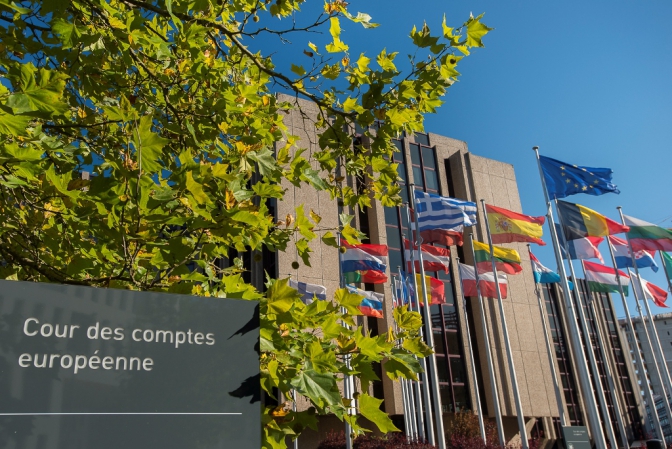The special measures in EU’s research programme Horizon cannot on their own create the changes needed in the member states to unlock excellence and give them better access to EU funding according to a new audit report published by the European Court of Auditors (ECA) on Wednesday.
Participation in the EU’s multi-year research and innovation (R&I) programmes is based on excellence, meaning that only the best proposals are selected. As a result, researchers and innovators from low-performing countries with less developed R&I ecosystems face difficulties in competing with their peers from better performing countries
They succeed less often in winning places on the programmes, which in turn limits their countries’ potential to overcome their R&I shortcomings. The EU addressed this vicious circle by introducing a number of measures to widen participation in the Horizon 2020 funding programme for the 2014-2020 period.
The aim of the widening measures was to boost the capacity of research institutions in low-performing countries’ by helping them to network, partner with leading institutions and attract highly skilled staff. The budget for these measures for 2014-2020 was €935 million and €2.95 billion for 2021-2027 under Horizon Europe.
The measures consist of different co-operation and networking structures such as Teaming, Twinning, ERA Chairs and COST where countries lagging behind can benefit from support from better performing countries. That said, the crucial factor determining a country’s performance is considered to be its national R&I investment levels. In 2020, the average investment in R&I in the EU was 2.3 % of GDP, below the 3 % target.
The widening measures targeted the 13 countries that have joined the EU since 2004, plus Luxembourg and Portugal. Of them, only Slovenia and Czechia invested more than 2 % of its GDP in R&I. All countries classed as widening countries under Horizon 2020 retained this status under Horizon Europe with the exception of Luxembourg, which has been replaced by Greece.
Fit for purpose but unequal allocation
“To tap the EU’s potential and close the gap between innovation leaders and modest innovators, researchers from all across the EU should be able to benefit from its funding programmes,” said Ivana Maletić, the Croatian ECA member in charge of the report.
“The Commission helps the underperforming countries catch up, but its support is not a miracle pill and can only act as a catalyst. To break the vicious circle, the member states must play their full part.”
The auditors analysed two measures aimed at creating long-lasting effects for beneficiaries: Teaming (support for centres of excellence) and ERA Chairs (bringing outstanding academics to research institutions). They also looked at the use of the Policy Support Facility (PSF), a measure to help the member states to improve their R&I policies and systems.
The auditors concluded that widening measures addressed the reasons why certain EU countries suffer from low R&I performance and limited participation in successive EU programmes. However, they criticised the fact that widening projects were concentrated in just a few countries. They also found that beneficiaries of these measures had only limited power to exploit their research results.
According to the report, the participation of the 15 countries in the Horizon 2020 increased from 5.5% to 7.2%. “The increase of 1.7% of a percentage point might look like a small step but is actually quite a giant leap in relative terms, as the increase stands at more than 30 %,” the audit team explained to The Brussels Times.
Both the Commission and ECA admit that the results of the widening measures still remain to be seen as most projects are still ongoing, which means that their cost-effectiveness cannot not yet be estimated.
The auditors added that there are important aspects that cannot be quantified but are important outcomes such as establishing connections, gaining experience in preparing H2020 proposals or political attention towards R&I. These are difficult to measure in monetary terms and are already happening.
Horizon projects are based on partnerships between research institutes and companies in several countries. Instead of widening measures, would it not be easier to oblige them to include participants from countries that are lagging behind?
“There is an extensive literature on the analysis of the R&I divide,” the audit team replied. “In our report, we found that the H2020 widening measures address most of the needs identified in this literature as causes of the R&I divide and low participation. The option of obliging the partnerships to include participants from countries lagging behind has some difficulties.”
An important aspect according to the auditors is to provide the means through the widening measures to participants from less performing countries to become more competitive in applying for funding and participating in R&I projects.
The budget for widening measures has tripled in Horizon Europe. Is this huge increase justified considering the audit findings?
“We see that there is clearly a need of having the widening measures to overcome existing barriers and pull the participation of certain countries close to the well-performing ones,” the audit team replied. “We decided to carry out this audit to inform policymakers about issues affecting the design and implementation of the measures, in particular as they are continuing under Horizon Europe.”
The widening measures were concentrated in just a few countries with half of the funding going to Portugal, Cyprus and Poland). Adjusted for capita, Cyprus and Estonia are in the top.
“For the two measures we analysed, Teaming and ERA Chairs, these imbalances are evident,” the audit team commented. “Cyprus obtained 25% of all the Teaming projects and Estonia obtained similar results in the ERA Chair projects. Another example, Portugal and Estonia obtained more than half of the ERA Chair projects, while seven countries obtained just one or did not obtain any projects at all.”
The real important aspect is that there are countries that had a limited participation in the programme, especially in the instruments aiming at bringing about structural changes, the team explained.
These countries are also mostly the ones having difficulties to participate in Horizon 2020. The risk is that if this continuous, the effect of widening measures could be concentrated in a limited number of countries. This would not break the vicious circle, but actually leave some countries bogged down and at the end of the queue, as it were.
“We need to take into account that widening measures aim to widen participation and unlock excellence in Europe. This cannot be achieved if projects are concentrated in a limited number of countries. We recommended in this regard that the Commission should monitor the evolution of the participation in the Horizon Europe´s widening measures and, react to significant imbalances in participation.”
Are there success stories related to the widening measures?
“We overall observe that those countries performing well in widening measures also perform well in H2020, in terms of funding and networking. Cyprus and Estonia are the countries showing the largest increases. Among larger widening countries, Portugal has increased significantly its participation. These countries have shown also important advances in the European Innovation Scoreboard.”
The report exemplifies some of the successful projects. “An important aspect is that these projects are good source of employment for researchers and as such contribute to fighting the brain drain. We have observed cases of researchers returning to their country of origin thanks to the measures and bringing the experience they have gained abroad.”
The auditors call on the Commission to avoid giving out the bulk of projects to just a few countries, and take steps to achieve wider participation if continuous stark imbalances emerge. This was an audit where the Commission and ECA agreed on the logic and design of the audited measures so it came as no surprise that the Commission in its reply accepted all audit recommendations.
M. Apelblat
The Brussels Times

